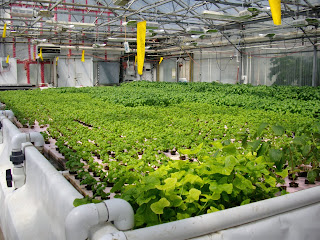“I’m not interested in sustaining a planet on life support. My goal is to use agriculture to regenerate the planet.”
― Harry Stoddart
Mushrooms grow mycelium and once the mycelium has filled its container it will fruit. Mushrooms, especially gourmet mushrooms can fetch $3-$15/lb at market. Why are they sustainable? Once you have a healthy mycelium culture you can grow it forever. Simply "transplant" some of the mycelium culture into glass or plastic contains to fruit. The remaining mycelium will continue to grow larger. It is like never having to buy seeds again.
Mushroom farms also don't have a large carbon footprint. If you're adept and lucky, you can even produce a steady income or start a business growing mushrooms.
Many of the mushrooms we eat here in the USA come from China, so a lot of energy can be saved if you sell mushrooms to your local community!
I will add that mushrooms are also highly recognized around the world for being a tasty delicacy and having numerous diseasing curing chemicals. Yummy!
Materials:
― Harry Stoddart
Noticed the cost of food rising? With less farms and more crop loss due to weather it is the best time to start farming mushroom, aquaponics, and definitely integrating farming with greenhouses.
Mushrooms Farms
Mushroom farms also don't have a large carbon footprint. If you're adept and lucky, you can even produce a steady income or start a business growing mushrooms.
Many of the mushrooms we eat here in the USA come from China, so a lot of energy can be saved if you sell mushrooms to your local community!
I will add that mushrooms are also highly recognized around the world for being a tasty delicacy and having numerous diseasing curing chemicals. Yummy!
Materials:
- If you grow them indoors, like the photo above, you can grow year round therefore you will need a building with lights and climate control. It will be easier if you have a building with two or more rooms. One for growing the mycelium and one for fruiting.
- Fans with filters to provide clean air flow.
- A few solar panels will provide enough energy to power the lights, fans, and climate control.
- Mushroom spawn and growing medium like grain, sawdust, and even used coffee grounds.
- Shelves for increasing square footage. Photos at the end of this post show many shelf options. These can be as expensive or inexpensive as you want.
- Humidifier. Mushrooms require specific temperatures and moisture to fruit. To learn more about their preferences at a low cost you can order a free catalogue at www.fungiperfecti.com.
- Growing Containers: Using glass containers has a higher startup cost but can be rewashed and reused after the mushrooms "flush"and are send to market. Mushrooms can also be grown in inexpensive plastic grow bags which can be found on the internet. Hardware stores will not carry them. Around the world mushrooms have also been grown in sterilized soda bottles. Reuse Kudos!
- Plastic or cardboard boxes to transport to grocery stores, restaurants, and farmers markets.
Mushroom farms around the world:
Have fun and happy growing a sustainable future!

















































































